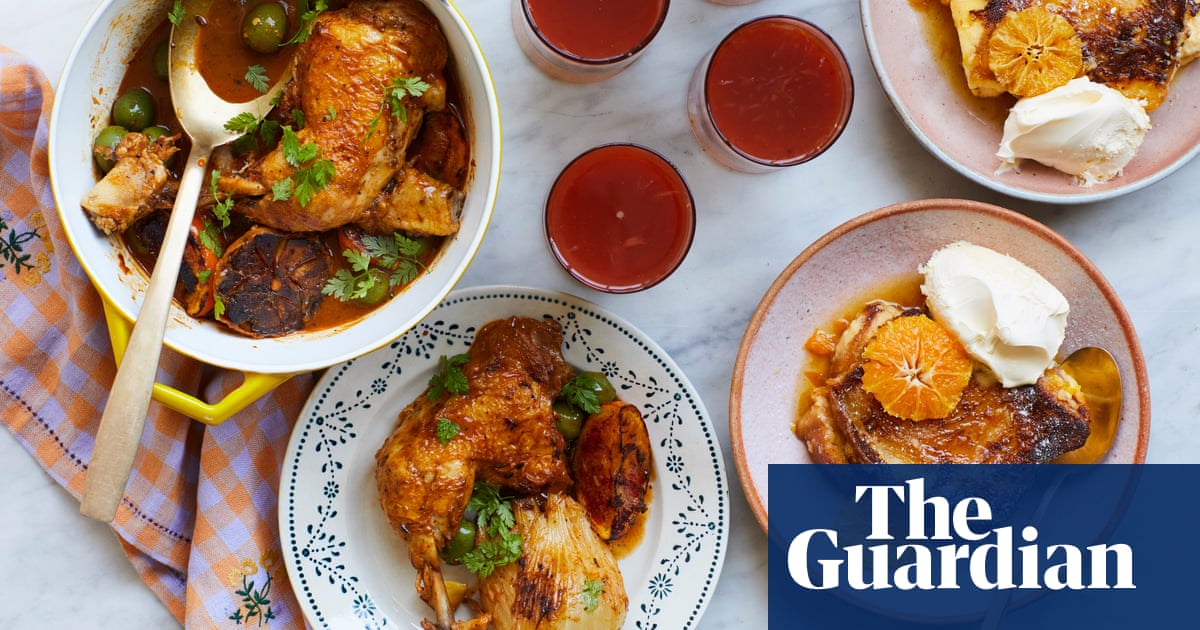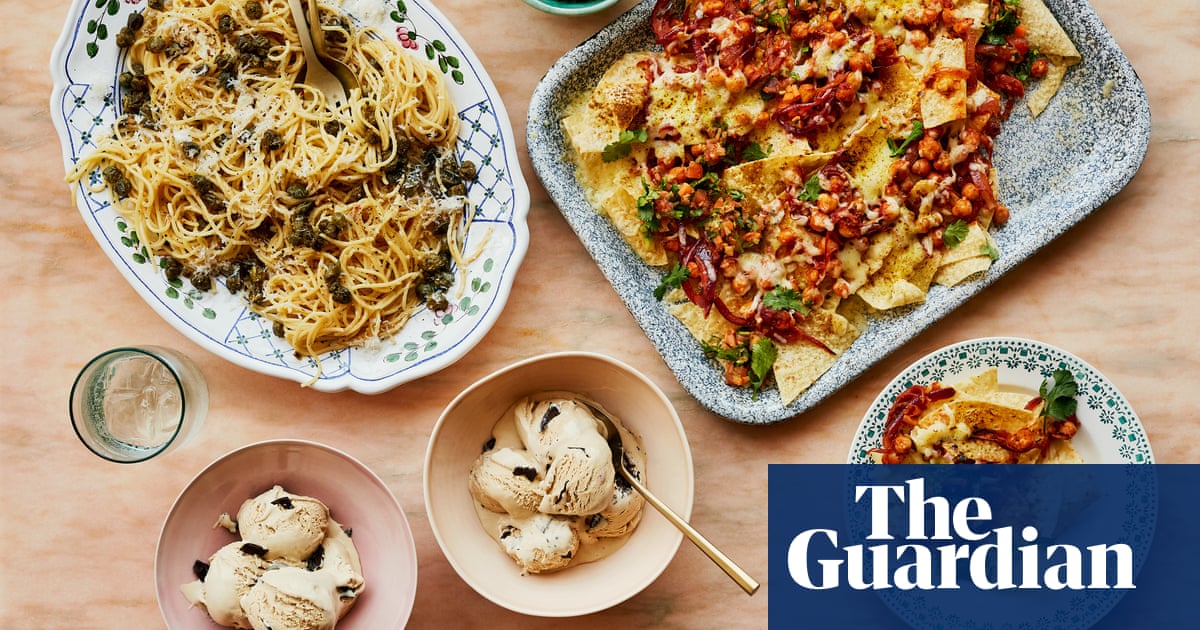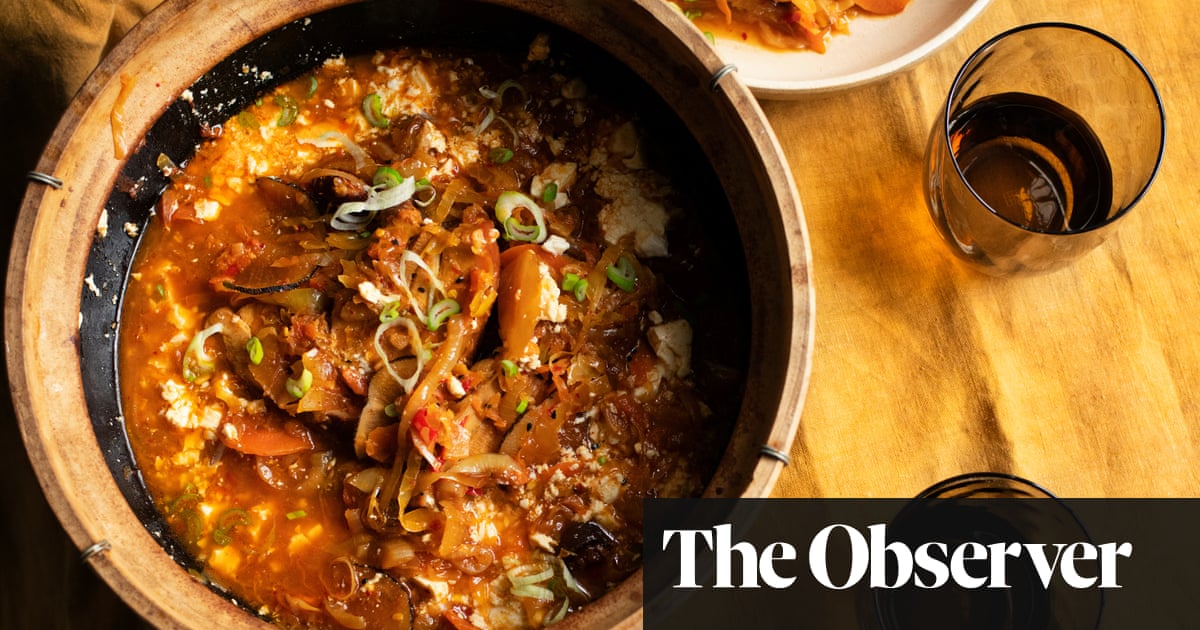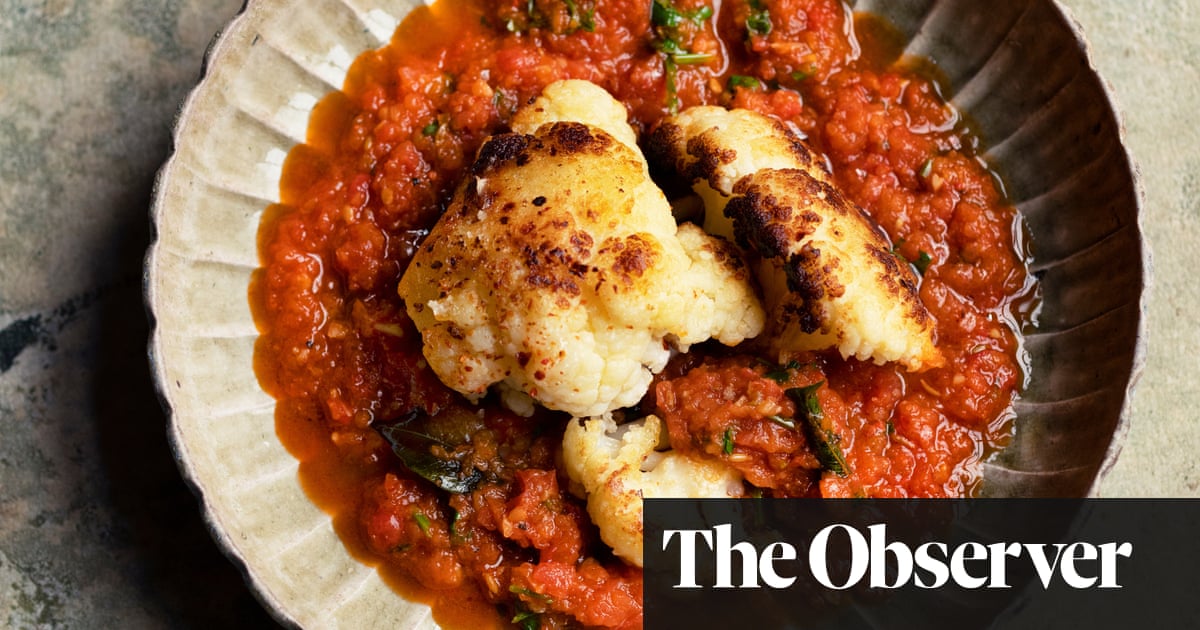
Braising is a transformative and uncomplicated way of cooking. It’s particularly suited to cosier cooking during the frigid months, or for unflustered catering for a crowd. When simmered gently in flavourful liquids at a low temperature, even the toughest of meats and the hardiest vegetables and pulses are coaxed into yielding, delicious comfort food. The beauty of a braise is how both the broth and the main ingredient are enriched when they linger together for some time, not to mention that it is also mostly hands-off cooking.
Aromatic coconut chicken and potatoes (pictured above)
This whole chicken braised in a bath of rich, spice-laden coconut milk, is the perfect, cosy alternative to a traditional Sunday roast.
Prep 15 min
Cook 1 hr 40 min
Rest 30 min
Serves 4
2 tbsp ghee
1½kg whole chicken
2 large red onions, peeled, halved and sliced into fine crescents
1 tsp cumin seeds
2 star anise
1 cinnamon stick, broken up
2 red chillies
6 garlic cloves, peeled and roughly chopped
7½cm piece fresh ginger, peeled and roughly chopped
Salt, to taste
15 curry leaves
3 tbsp madras curry powder
400g tinned chopped tomatoes
800ml coconut milk
800ml chicken stock
3 medium potatoes, peeled and cut into large wedges
Juice of 1 lime
1 handful fresh coriander leaves, finely chopped
Melt the ghee in a large, deep casserole pot on a medium heat, then brown the chicken all over and set aside. Add the onion, cumin, star anise and cinnamon to the casserole and fry, stirring, for about 10 minutes, until golden brown.
Meanwhile, put the chilli, garlic and ginger in a food processor and blend to a fine paste. Stir this into the onions, along with some salt, the curry leaves and curry powder, and fry for a couple of minutes, until aromatic.
Tip in the tomatoes, cook for five minutes, then pour in the coconut milk and stock, and bring to a boil. Turn down to a simmer, cook for three minutes, then toss in the potatoes.
Carefully lower the browned chicken, breast side up, into the liquid, then cover the pot and leave to cook over a low heat for an hour. Turn off the heat and let the chicken sit for another half an hour.
Squeeze over the lime juice, scatter with the coriander and serve with roti and/or steamed jasmine rice.
Hispi cabbage with white beans and parmesan
This is a favourite, hearty, meat-free Monday dish in my house. You can use dried beans, which will need soaking and cooking separately, but the convenience of ready-cooked ones is great for weeknight suppers.
Prep 15 min
Cook 1 hr
Serves 4
60ml extra-virgin olive oil, plus extra to finish
2 hispi cabbages, any damaged outer leaves removed, then cut in half through the stem
1 onion, peeled and finely chopped
3 fat garlic cloves, peeled and finely sliced
3 stalks rosemary, leaves picked and finely chopped
Finely grated zest of 1 lemon, plus the juice of ½ lemon
½ tsp pul biber
500ml chicken or vegetable stock
550g jar cannellini beans, or 2 x 400g tins, drained
Sea salt and black pepper
4 tbsp grated parmesan
1 handful finely chopped flat-leaf parsley
Crusty bread, to serve
Heat the oven to 200C (180C fan)/390F/gas 6. Warm half the olive oil in a large frying pan for which you have a lid, then lay in the cabbage halves cut side down, and leave to fry until they begin to colour; if need be, cook the cabbage halves in batches. Transfer to a baking tray or plate.
Heat the remaining oil in the same pan, then saute the onion and garlic for five minutes, until soft but not caramelised. Add the rosemary, lemon zest and pul biber, fry for a minute until fragrant, then pour in the stock.
Add the beans, bring to a simmer, then break down some of the beans with the back of a spoon. Return the cabbage to the pan, season with sea salt and pepper, cover and transfer to the oven for 30 minutes, or until the cabbage is tender.
To serve, squeeze over the lemon juice and scatter over the parmesan and parsley. Finish with a drizzle of olive oil and serve with crusty bread.
Pineapple pork shoulder
This mines the traditions of Chinese sweet-and-sour pork and Filipino adobo to create a charismatic dish that gives the very best of both.
Prep 20 min
Cook 1 hr 20 min
Serves 4
4 tbsp avocado oil, or other neutral oil
1kg pork shoulder, cut into 4cm cubes
100g cornflour seasoned with sea salt and pepper
6 garlic cloves, peeled and finely chopped
4cm piece fresh ginger, peeled and sliced into thin matchsticks
1 long red chilli, thinly sliced on the diagonal
2 tsp black peppercorns
1 star anise
1 quill cinnamon
100ml apple cider vinegar
100ml light soy sauce, or tamari
250ml pineapple juice
2 red onions, peeled and cut into 2cm cubes
1 red pepper, stalk, pith and seeds discarded, flesh cut into 2cm cubes
1 yellow pepper, stalk, pith and seeds discarded, flesh cut into 2cm cubes
1 small pineapple, peeled, cored and cut into chunks
A few drops of sesame oil
5 spring onions, trimmed and cut into fine strips
Heat two tablespoons of oil in a large casserole dish on a medium heat. Lightly dust the pork chunks with the seasoned cornflour, then fry in batches until well browned on all sides. Transfer to a large plate.
In the same pan, saute the garlic, ginger, chilli, peppercorns, star anise and cinnamon for a couple of minutes, until fragrant, then pour in the vinegar, soy sauce and pineapple juice, and bring to a simmer.
Put the pork back in the pan, cover and leave to cook on a low heat for 50 minutes, until the meat is very tender. Take off the lid, turn up the heat and cook for a further 15 minutes, until the sauce reduces and turns glossy.
When the pork is almost done, heat the remaining oil in wok or saute pan on a high heat and briefly stir-fry the cubed onions and peppers for a minute or two. Using a slotted spoon, transfer to the pork pot. In the same pan, fry the pineapple chunks for five minutes, until they’re starting to caramelise, then gently stir that into the pork, too.
Finish with a few drops of sesame oil, scatter the spring onions on top and serve with sticky rice.












